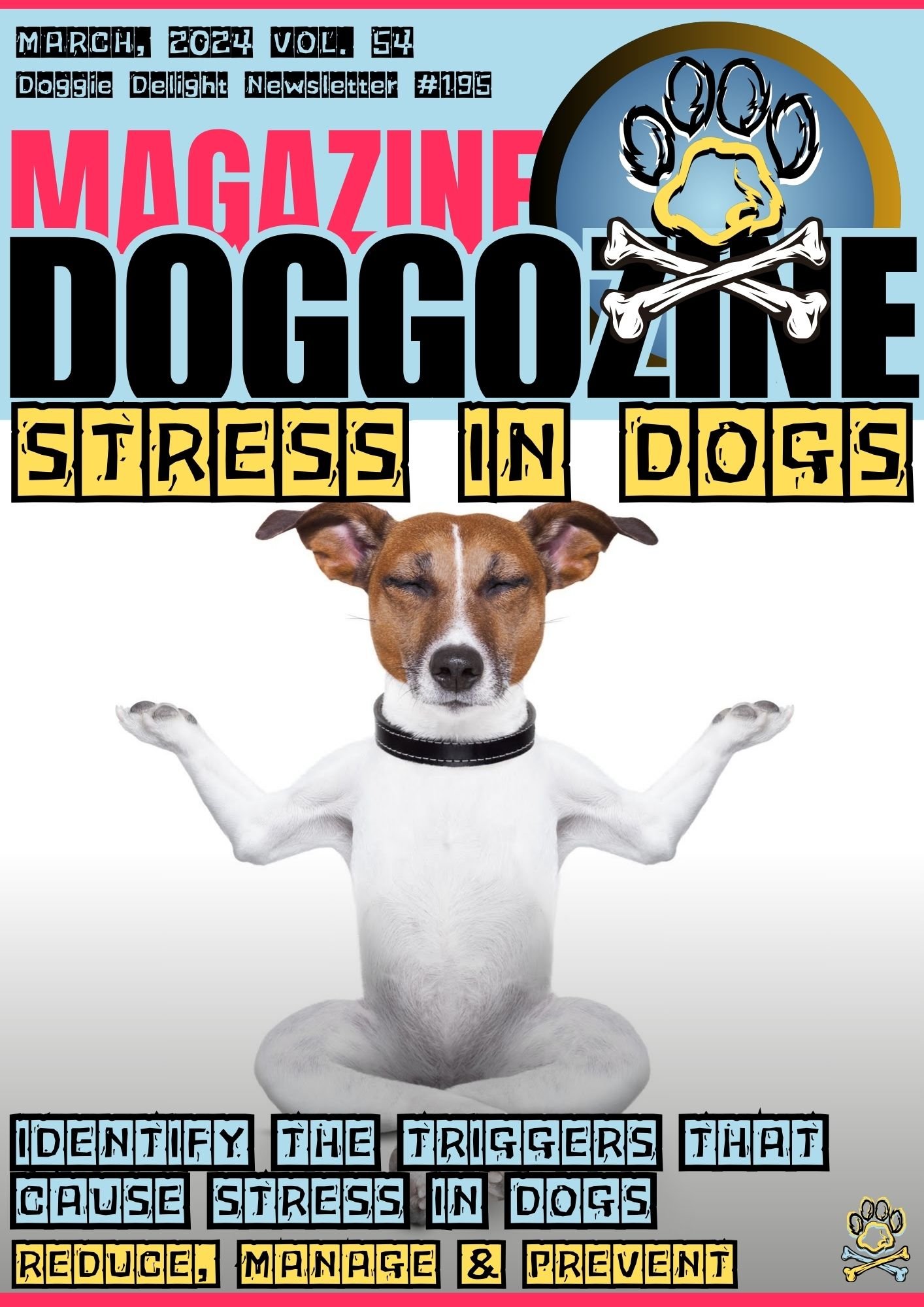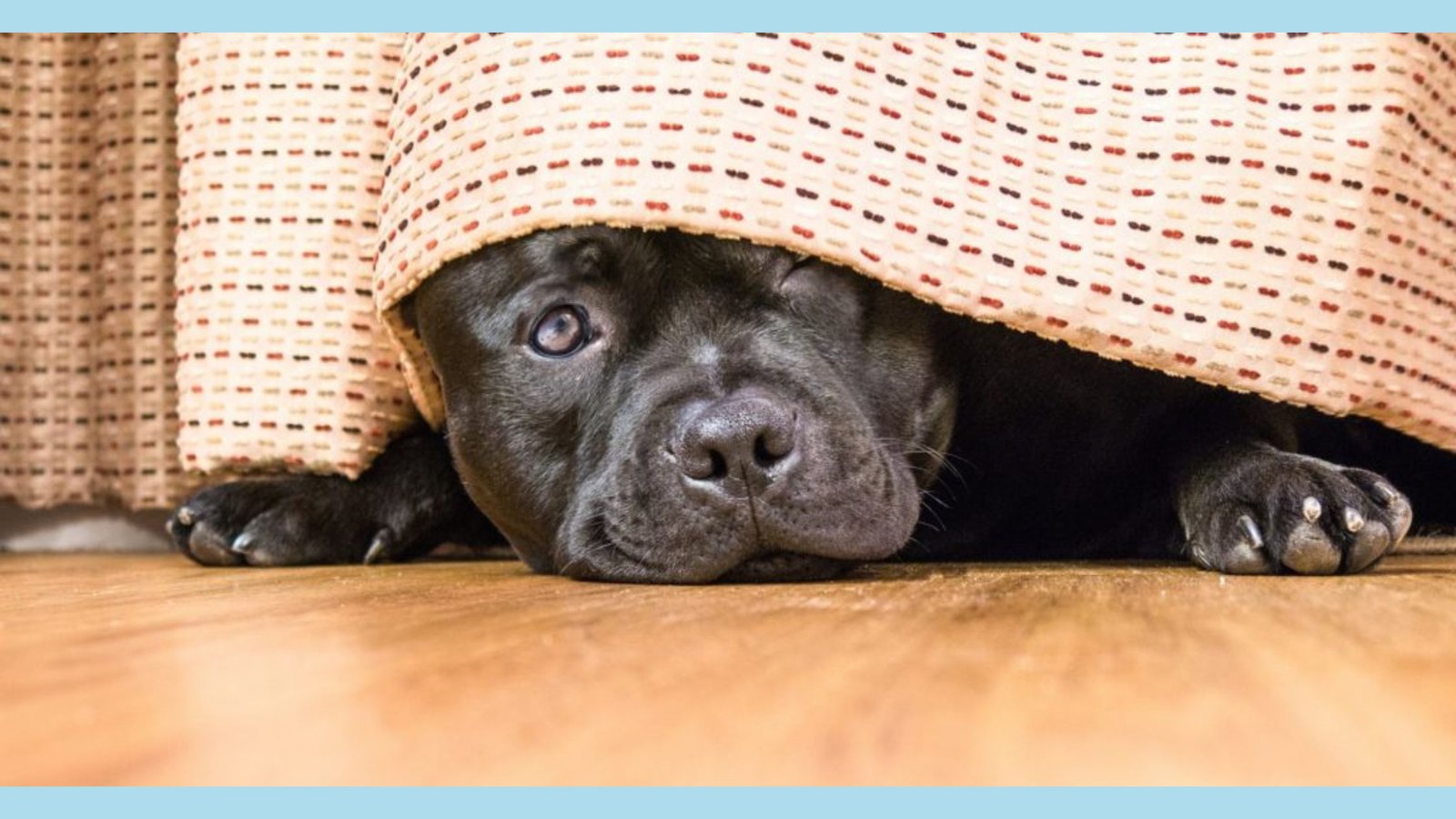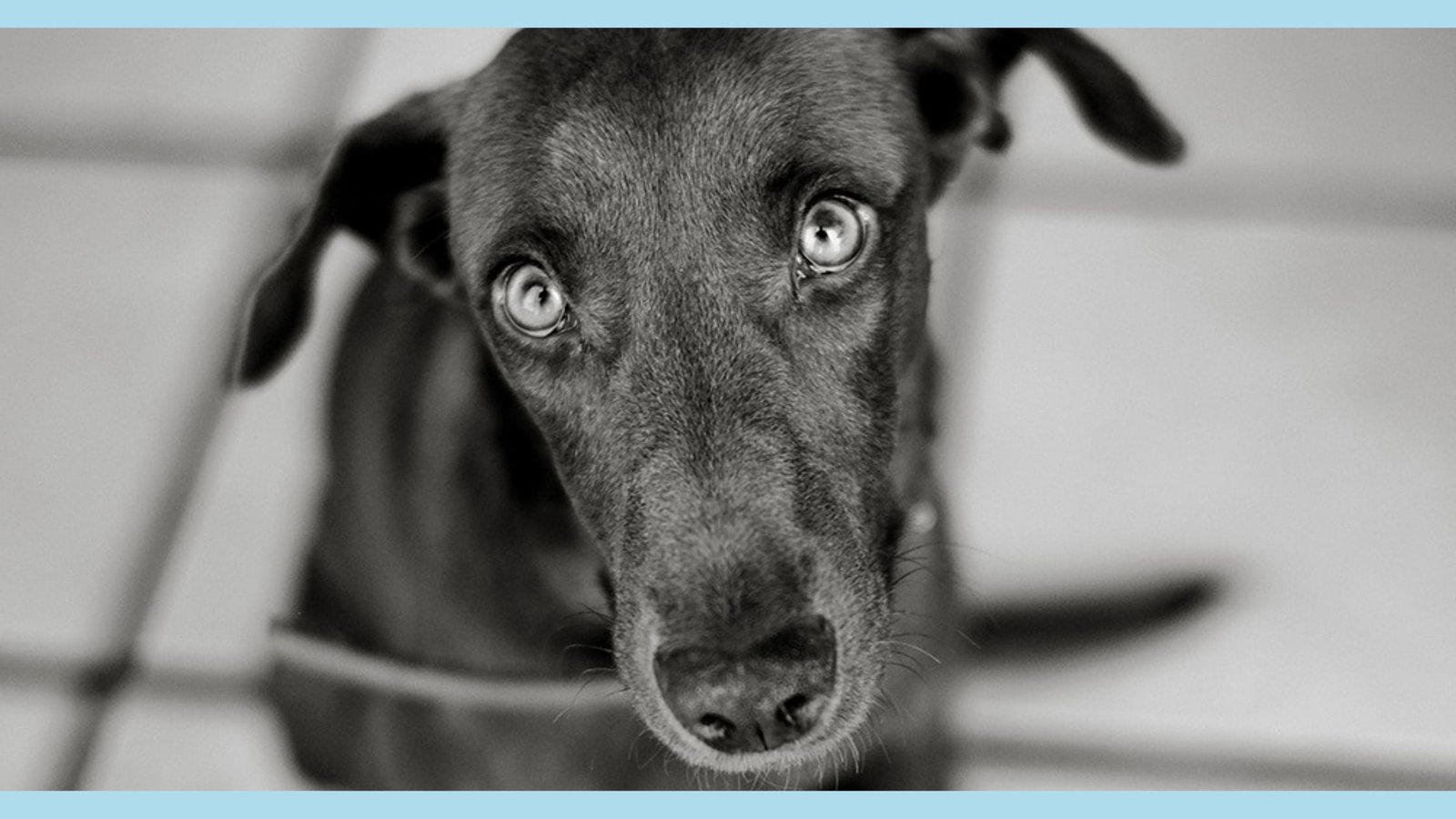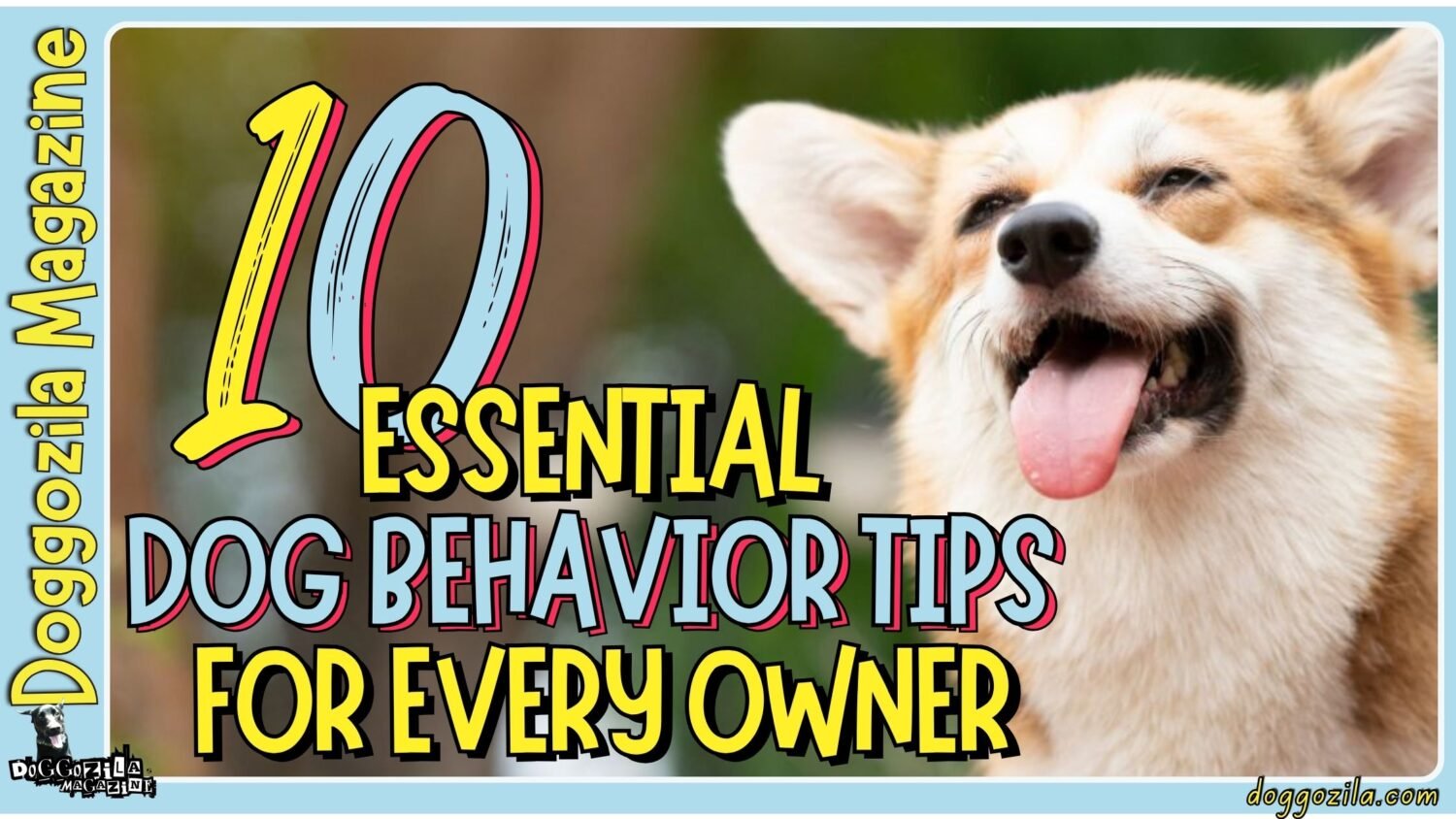
UNDERSTANDING STRESS IN DOGS
Stress affects not only people but also our furry companions. Just like humans, dogs can feel stressed in different situations. Pet owners need to know the signs and causes of stress in dogs in order to help them.
What are The Common Causes Of Stress In Dogs?
One big cause of stress for dogs is changes in their environment. Dogs like familiar routines and surroundings. Any sudden changes can make them anxious and stressed. This could be moving to a new home, bringing in a new pet or family member, or even rearranging furniture. Dogs feel secure with stability and familiarity. Disruptions to their routine can stress them out. Another common stress cause is issues with socialization.
Dogs are social creatures. They need positive interactions with other dogs and people to feel safe. Lack of socialization or negative experiences can make dogs fearful and anxious. This often happens with rescue dogs or dogs that were mistreated. Physical discomfort or illness is also a big stress source for dogs.
Monitor your dog’s health
Like humans, dogs can feel pain or discomfort from health issues like arthritis, dental problems, or allergies. These physical problems can make dogs irritable, restless, and stressed. Pet owners must watch their dog’s health. They should see a vet if their dog seems uncomfortable or sick.
Dogs sometimes feel anxious for various reasons. Loud sounds like thunderstorms or fireworks can make them uneasy. Being alone for long periods or busy surroundings can also cause stress. Pet owners need to understand what triggers anxiety in their dogs and find ways to reduce it.
It’s important to recognize signs of stress in dogs. Panting excessively, pacing back and forth, trembling, barking or whining often, changes in appetite or sleep patterns, and aggression are common indicators. However, these signs may vary from dog to dog. Observing your pet’s behavior closely can help identify any unusual changes suggesting stress. Once you notice your dog is anxious, you can take steps to help them feel calm and safe.

REDUCE STRESS IN DOGS
Creating a peaceful environment is crucial for a stressed dog. Making adjustments to their living space, routine, and interactions can help ease their anxiety.
Reduce Stress In Dogs By Creating Calm And Safe Environment
One of the first things to do is provide a quiet space where your dog can retreat. This could be a crate, a separate room, or a comfortable bed away from noise or distractions that might unsettle them.
Here are some other tips:
- Maintain a predictable routine for feeding, exercise, and playtime. Dogs thrive on consistency and familiarity.
- Play calming music or use pheromone diffusers to create a soothing atmosphere.
- Provide interactive toys or puzzles to keep their mind engaged and reduce boredom.
- Consider using an anxiety wrap or compression shirt designed to promote relaxation.
Making life easier for your dog is important. Set the same times each day for feeding, playing, and exercise. This keeps things simple and helps your dog feel calm. Too much noise can worry your dog. Try to keep loud sounds away. Provide a quiet space for your dog to go during times like fireworks or storms. Play soft music or use white noise to mask sudden loud sounds.
Find your dog’s safe space
Figure out what specifically bothers your dog. Avoid those things as much as possible. For example, if other dogs make your dog nervous, take walks in less crowded places instead of busy dog parks. Keeping your dog away from whatever makes them anxious will help them relax.
Give your dog toys or activities that get their brain working. Puzzle toys or training make their mind focus. This takes away stress. Switch out their toys sometimes so they stay interested. Do short training sessions daily. Teaching new things challenges their mind in a good way and reinforces good behavior.
Making your stressed dog feel calm is important. Every dog is special. It may take time to find what works best for your furry friend. With patience, consistency, and love, you can help your dog feel safe and secure.
Exercise And Play Can Reduce Stress In Dogs
Regular exercise is necessary for a dog’s well-being. It can also help reduce stress. Exercise releases chemicals that improve mood naturally.
Here are some tips to add exercise and play to your dog’s routine:
- Daily walks: Take your dog for walks every day. This provides exercise and mental stimulation. Walking also allows your dog to explore. Try different routes to keep things interesting.
- Interactive playtime: Play with your dog using toys like balls, frisbees, or tug ropes. This provides exercise and strengthens your bond. Try different games and training to keep your dog mentally engaged.
- Consider dog sports: If your dog enjoys physical activities, look into dog sports like agility, flyball, or dock diving. These provide physical and mental stimulation. Research local clubs or trainers to get started.
- Playdates are fun times for your dog to spend with other friendly dogs. This helps them bond and learn good playing habits. Be sure you keep an eye on the dogs and pick ones that are the right size and temperament for your pup.
- Indoor play is great for days when going outside is tough. Try hide-and-seek games, puzzle toys, or training exercises. These activities keep your dog’s mind busy and avoid boredom.
Dogs need exercise
If your dog likes water, swimming makes a refreshing low-impact workout. Look for dog-friendly swimming spots or join a class. Swimming builds muscle and cools dogs off in the summer heat.
Think about your dog’s age, breed, and health when planning exercise. Some dogs need intense workouts, while others have limits. Ask your vet if your dog’s exercise plan is right for them.
Reduce Stress In Dogs With Positive Reinforcement Training
Positive reinforcement training with rewards and praise can really help stressed dogs. It teaches new behaviors and boosts confidence.
Tips for positive reinforcement training:
- Use yummy snacks and say “good dog”: Give your furry friend tasty treats and praise when they do well. Your pup will learn that certain actions lead to rewards. For instance, if teaching your dog to sit, give them a treat and praise after they sit when told. Dogs repeat behaviors that earn them goodies!
- Keep lessons short and sweet: Dogs get bored easily, so keep training sessions around 10-15 minutes. Any longer and they’ll tune out. Short bursts prevent frustration and help dogs learn better.
- Stay calm and be consistent: Dogs pick up new tricks at their own pace. Don’t get mad or yell – that’ll ruin the trust between you two. Just keep rewarding good behavior and gently correcting bad habits. Stick with it. Practice the same commands often and treat successes.
- Ask an expert if you’re stuck: If training isn’t working or your dog’s anxiety worsens, hire a certified dog trainer. Behavior pros understand dog stress and can make a custom plan for your pup’s needs. They’ll teach techniques to help your stressed dog relax and overcome issues.
Training your dog with positive reinforcement is about making learning fun. Use treats, praise, and patience to help a scared dog feel brave in a safe place.
Help Dogs Feel Good with Love and Care
When dogs are stressed, give them love and care.
Here are ways to comfort a stressed dog:
- Touch them gently by petting or cuddling. This makes dogs feel loved and helps them relax.
- Make a cozy space for them to rest, like a soft bed or crate.
- Don’t punish them. That makes stress worse. Instead, stop bad behaviors and reward good ones.
- Try calming products like pheromone sprays or anxiety wraps. These can help dogs feel peaceful.
- Keep a daily routine. Dogs feel safe when things are regular, like meal times, walks, and playtime. Stick to a schedule every day.
- Mental stimulation is key for dogs to avoid boredom. Give your pup puzzle toys, games, or training. This keeps their mind engaged and burns energy in a good way.
- Use rewards to reinforce good behavior. Treats, praise, or playtime help build trust. Your dog will learn that following commands leads to positive things.
- Look out for things that stress your dog. Loud noises, new people/animals, or changes can upset them. Reduce exposure or help them get used to triggers slowly.
- A balanced diet is important for your dog’s health. Talk to your vet about the right food plan for your pet’s needs. Proper nutrition supports overall well-being.
Create A Safe Space For Your Dog
Designate a calm area for your dog to retreat when overwhelmed. A consistent routine with ample exercise and mental activities reduces stress too. If issues persist, seek professional guidance.
A certified dog teacher or animal expert can work with you and your pup. They will make a plan to help your dog feel less scared and worried. This plan may involve helping your dog get used to things that scare them. It is important for pet owners to understand when their furry friend feels stressed.

Signs Of Stress In Dogs
If we notice the signs of stress in dogs, we can help them. Dogs may pee more when stressed. This could happen because of higher levels of a hormone called cortisol.
- Excessive Shedding: Stress can also make dogs shed more fur than normal. If you see a lot of dog hair around your home or on your dog’s bed, it may be a sign of stress.
- Restlessness or Inability to Relax: Stressed dogs may find it hard to settle down or relax. They may pace back and forth, have trouble sleeping, or seem on edge all the time.
- Hiding or Seeking Solitude: Some dogs may try to hide or find a quiet spot when they feel stressed. They may go under furniture, in a corner, or even in a closet to get away from things that stress them.
- Excessive Lethargy: While some dogs get more active when stressed, others may become very tired and lazy. They may have little energy, not want to do fun activities, or sleep more than usual.
Look out for changes in how your dog behaves. A tucked tail, flattened ears, or a hunched body can show stress or worry. But these alone may not mean stress – some dogs just act like that sometimes. If you see a mix of these actions or a sudden change, it could mean stress.
Health Issues Can Stress Dogs
In that case, talk to a vet or dog expert to find the stress cause and help your dog cope. Some health problems like pain, allergies, or stomach issues can make dogs uncomfortable and anxious, causing stress. Dogs are smart and need activities to stay happy. If they don’t get enough mental stimulation, they can get bored and stressed. But too much stimulation, like crowded noisy places, strong smells, or being around lots of animals and people, can also stress dogs.
Dogs need regular exercise to use up energy and stay fit. Without enough exercise, they may get restless and stressed. Dogs feel calm when they’re in familiar places. Being somewhere new, like a park or kennel, can make them feel worried. They like being around the people and pets they know.
Dogs love getting attention and praise. If we don’t give them enough, they might feel sad or stressed out. We should always compliment them when they’re good! Training is important for dogs, but some methods are too harsh. Using punishment or negative reinforcement can make dogs scared and stressed. It’s better to use positive reinforcement and rewards.
Dogs need daily schedule
Big changes at home can stress dogs out. Things like a new baby, new pet, or someone moving away are hard for dogs. They need time to get used to the changes. Dogs like having a routine and knowing what will happen. Not having a daily schedule can make them anxious and worried. A consistent routine helps dogs feel safe.
Dogs need a special place that’s just for them. It’s a safe spot where they can go when they’re overwhelmed or stressed. Without a calm space, dogs feel exposed and unsettled all the time. Understanding what causes stress helps owners create a relaxing home for dogs. Routines, playtime, rewards, and love all keep dogs happy.

HOW TO IDENTIFY THE TRIGGERS THAT CAUSE STRESS IN DOGS?
In addition to seeking professional help, you can also implement behavior modification techniques to help your stressed dog. This involves identifying the triggers that cause stress and gradually exposing your dog to them in a controlled and positive way. For example, if your dog is fearful of loud noises, you can start by playing a recording of the noise at a low volume and gradually increase it over time while rewarding your dog with treats and praise for remaining calm.
Addressing Your Dog’s Stress
Working with a professional allows you to have a comprehensive approach to addressing your dog’s stress. They can provide you with a step-by-step plan that includes techniques and strategies to help your dog relax and cope with stressors. This may involve desensitization and counter-conditioning exercises, where your dog is gradually exposed to the triggers that cause stress in a controlled and positive manner.
Furthermore, a professional can guide you on how to create a calm and safe environment for your dog. They can provide advice on establishing routines, creating a designated space for your dog to retreat to when stressed, and implementing relaxation techniques such as massage or aromatherapy.
Remember, each dog is unique, and what works for one may not work for another. Patience, consistency, and understanding are key when helping a stressed dog. With the right approach and support, you can help your dog overcome their stress and lead a happier, more relaxed life.
Teach Your Dog Less Stressful Ways
- Offer Chances to Meet New Friends: Spending time with others helps dogs feel secure. Take your pup to meet new folks, pups, and places in calm ways. Puppy classes or dog parks are good spots for this. Just watch closely to keep things positive.
- Ask Your Vet About Calming Herbs: Some natural plant remedies can relax stressed dogs. Chamomile and valerian root may help your buddy chill out. But check with your vet before giving any supplements to make sure they’re safe for your furry friend.
- Practice Calm Tricks: Like people, dogs can learn to relax through training. Teach your pup basic cues like “sit” and “stay” and reward them for staying cool and collected. You might also try gentle massage or Touch methods to help them unwind.
- Give Extra Love: Sometimes all a stressed dog needs is more attention and affection. Spend quality time with your pup doing fun activities they enjoy. Lots of pets, praise, and reassurance can go a long way towards making them feel safe and serene. Every dog is unique, so stay patient and consistent. With the right calming strategies and support, you can help an anxious pup find greater peace.

MANAGING STRESS IN DOGS
Like humans, dogs can feel stressed. Different things can make dogs stressed, like being hurt, changes in their home, or sickness. It’s important for owners to see when their dog is stressed and help them feel better.
Stress In Dogs Management
Getting help from professionals can make a big difference in managing stress in dogs. Vets know how to check dogs for stress and find out what’s causing it. They can give your dog a checkup to make sure they aren’t sick. Then, they can give you ideas for helping your dog feel less stressed.
Animal behaviorists study how animals act. They know a lot about why dogs behave certain ways. They can figure out what’s stressing your dog and make a plan to help them feel calmer.
Signs Of Stress In Dogs
Dogs show stress in different ways. Dogs that bark or whine a lot might be stressed. Panting, pacing, trembling, or hiding can also mean a dog is stressed. Some stressed dogs may act angry or destroy things. As a pet owner, you need to understand why your dog is stressed.
Dogs may become stressed due to past experiences, changes in their surroundings, or medical issues. If your furry friend has gone through abuse or trauma, they might feel anxious in certain situations. Moving to a new home or welcoming a new family member can also cause stress. Some health conditions like chronic pain can contribute to a dog’s stress levels too.
Medical Conditions That Stress Dogs
If your canine companion is exhibiting signs of stress, it’s wise to consult a veterinarian. They can check for underlying health problems that could be causing or worsening the stress. Once you’ve identified the source, there are steps you can take to help your dog feel calm and secure. Creating a cozy, safe space is crucial.
Provide a quiet area or crate where your dog can retreat when feeling overwhelmed. This can be their personal haven. Regular exercise is also vital for managing stress in dogs.
Physical Activity and Mental Games Reduce Dog Stress
Daily walks or playtime help dogs burn off excess energy and release endorphins, which boost mood. Mental stimulation is equally important. Engage your dog with puzzle toys or training sessions to challenge their mind. This provides both physical and mental enrichment, reducing stress.
Mental activities can help dogs avoid worrying. It gives them a sense of success. Each dog is different. What works for one may not work for another. If unsure how to help your dog, ask a dog trainer or expert. They can provide personal advice to help your dog in a safe way. Be patient and kind when helping your dog manage stress. With support, you can help your furry friend feel happier and healthier.
Dogs show signs when stressed. Look for changes in body and behavior. Signs often include: heavy panting or drooling, faster heartbeat, pacing or restlessness, excessive barking or whining, poor appetite, aggression or fear, licking or chewing a lot, trying to escape or hide, bathroom issues, shedding more than normal, growling at animals or people for no reason, yawning or licking lips often, tail tucked between legs.

RECOGNIZING THE SIGNS OF STRESSED DOGS
Dogs may show different signs when stressed. Watch for changes in their body and actions.
What Are The Usual Stress Signs in Dogs?
- Heavy panting or drooling
- Fast heart rate
- Pacing or unable to sit still
- Constant barking or whining
- Not wanting to eat
- Acting aggressive or afraid
- Licking or chewing excessively
- Trying to run away or hide
- Problems going to the bathroom
- Shedding more than normal
- Growling at animals or people for no reason
- Yawning or licking lips a lot
- Tail tucked between back legs
Separation Anxiety Can Be Cause Of Stress In Dogs
Leaving dogs alone can stress them. This is called separation anxiety. Dogs get upset when left by owners. They may bark, chew, dig, or potty inside. Dogs feel scared and panic when alone. Separation anxiety causes stress in many dogs. But owners can help dogs feel calm when left alone.
If your dog shows signs of being stressed, it’s crucial to take action. Stress can harm a dog’s physical health and emotional well-being. You must find the root cause of their stress and address it properly.
Dogs are social creatures and may become anxious when left alone for too long. This is called separation anxiety. They might chew furniture or bark excessively due to this anxiety. If your dog has separation anxiety, gradually get them used to being alone. Also, provide plenty of mental and physical activities.
Fear Or Phobia Can Be Cause Of Stress In Dogs
Dogs can get stressed from being afraid or having a phobia of certain things. Loud noises, unfamiliar places, thunderstorms, fireworks, or vet visits may make them fearful or anxious. Provide a safe, secure space during these times. Use calming techniques like soothing music or anxiety wraps to reduce their stress.
Sometimes, changes in a dog’s environment or routine can stress them out. Moving homes, a new family member, or a schedule change can cause stress and anxiety. Give your dog a consistent routine and lots of positive reinforcement to help them adjust to changes.
It is wise to seek help if unsure why your dog feels stressed. Or if their stress does not go away. Talk to a vet or dog behavior expert. They can find the cause of stress. And make a plan to help your dog feel better.
Seeking Professional Help
Get expert help if your dog’s stress is severe. Or if you cannot reduce their stress alone. A vet or certified animal behaviorist has special training. They can give personal advice to address your dog’s needs.










